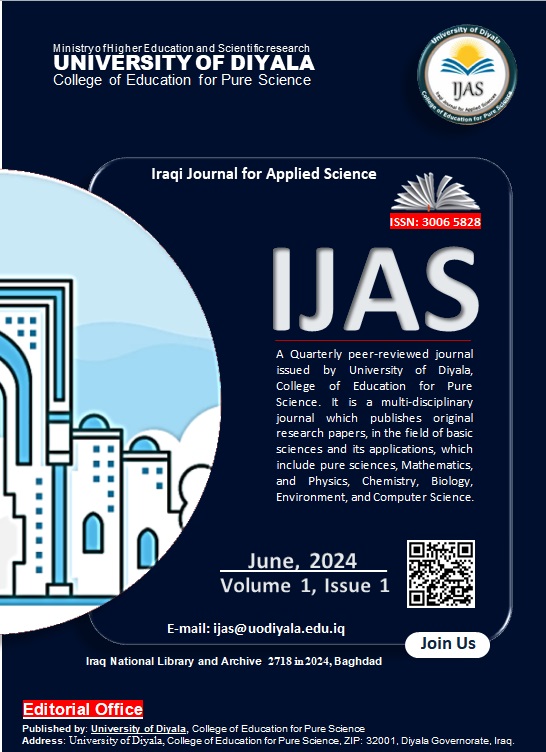Abstract
Diarrhea is a common infection in Iraq, often caused by Escherichia coli. It
is crucial to study the resistance genes of E. coli in diarrhea patients and their
relationship to Integron genes. The study collected 367 stool samples from
patients at the Batul Women's and Obstetric Hospital, Children, and Civil
Laboratories between 15/11/2022 and 1/2/2023. Escherichia coli was
diagnosed with chemical tests, and a confirmation of its diagnosis was
obtained using the type gene. This technique is considered to be a confirmed
diagnosis of E. coli. A total of 50 isolates were accurately and definitively
diagnosed as belonging to the bacteria Escherichia coli. The results of the
test for the sensitivity of E. coli to antibiotics (Ampicillin, Amoxicillin,
clavulanate, Ceftazidime, Cefotaxime, Aztreonam, Tobramycin) Amikacin,
Azithromycin, Doxycycline, Tigecycline, Ciprofloxacin, Levofloxacin,
Imipenem, Trimethoprim-sulfamethoxazole, Sulfonamides) were as follows
(96%, 94%, 88%, 92%, 68%, 26%, 56%, 52%, 60%, 0%, 26%, 28%, 14%,
74%, 68%) respectively. Integron Class I was detected in 64%, with 23
isolates containing the gene sul1 and 29 isolates containing the qacEΔ1. The
percentage of the sul1 gene in the isolates carrying the integron only was
67.64%. The percentage of the qacEΔ1 gene was 85.29%. Molecular
detection of the integron class I structure for regions involved in the integrin
structure (gene cassette Class 5, CS, 3, CS, ORFend, Sul1B, and F12ROrf513-lnk13) and the results of molecular detection of the above regions
showed that they were all present in all isolates.
is crucial to study the resistance genes of E. coli in diarrhea patients and their
relationship to Integron genes. The study collected 367 stool samples from
patients at the Batul Women's and Obstetric Hospital, Children, and Civil
Laboratories between 15/11/2022 and 1/2/2023. Escherichia coli was
diagnosed with chemical tests, and a confirmation of its diagnosis was
obtained using the type gene. This technique is considered to be a confirmed
diagnosis of E. coli. A total of 50 isolates were accurately and definitively
diagnosed as belonging to the bacteria Escherichia coli. The results of the
test for the sensitivity of E. coli to antibiotics (Ampicillin, Amoxicillin,
clavulanate, Ceftazidime, Cefotaxime, Aztreonam, Tobramycin) Amikacin,
Azithromycin, Doxycycline, Tigecycline, Ciprofloxacin, Levofloxacin,
Imipenem, Trimethoprim-sulfamethoxazole, Sulfonamides) were as follows
(96%, 94%, 88%, 92%, 68%, 26%, 56%, 52%, 60%, 0%, 26%, 28%, 14%,
74%, 68%) respectively. Integron Class I was detected in 64%, with 23
isolates containing the gene sul1 and 29 isolates containing the qacEΔ1. The
percentage of the sul1 gene in the isolates carrying the integron only was
67.64%. The percentage of the qacEΔ1 gene was 85.29%. Molecular
detection of the integron class I structure for regions involved in the integrin
structure (gene cassette Class 5, CS, 3, CS, ORFend, Sul1B, and F12ROrf513-lnk13) and the results of molecular detection of the above regions
showed that they were all present in all isolates.
